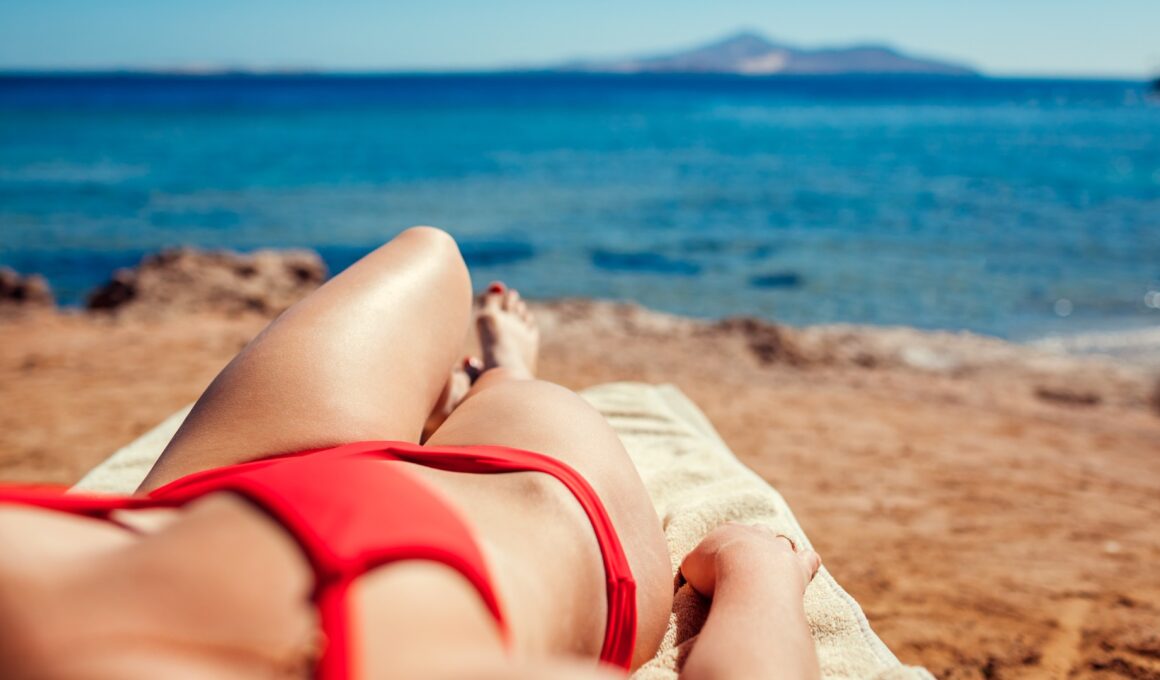As the weather gets warmer, it’s our natural reaction to want to spend more time outside, but like so many things, spending time in the sun should be something that is done responsibly, and in moderation. Many people know that exposure to sunlight can cause skin cancer, but why and how, and how do we protect ourselves?
How does the sun damage our bodies?
Light from the sun is made up of different kinds of radiation – mostly this is the harmless visible light that allows us to see color and shade, but some of the radiation in sunlight can be harmful in large doses, particularly ultraviolet (UV) radiation.
UV radiation penetrates the tissues of our skin and can damage (mutate) the DNA of our cells. Our bodies are usually very good at repairing any DNA damage, but lengthy and regular exposure to UV can cause more damage than the body can cope with. If mutations to the DNA are left unchecked, this may change the way in which the cells behave, and they can become cancerous.
What’s more, if the skin becomes sunburned, this makes it all the more difficult for the body to repair any DNA damage, and so the risk of developing cancers can be increased. To prevent skin cancers, it is very important to avoid burning.
What is the difference between tanning and sunburn?
Tanning occurs when special cells in your skin called melanocytes produce a brown pigment called melanin when exposed to sunlight. This is a good thing, because the brown pigment can help to protect your skin from some of the sun’s damage. Burning on the other hand is completely unrelated to tanning – in fact, the redness and soreness caused by sunburn is a sign that the top layer or layers of your skin have been damaged beyond repair.
It’s a common myth that if you get sunburn, it will ‘go brown’ later. Some people believe this falsehood so much so that they will actively TRY to burn, in the belief that they will develop a tan. This is very dangerous! Once the skin is burnt, it stays burnt and cannot be ‘unburnt’. The only way you will ‘go brown’ later, is when the damaged cells in the top layer of your skin eventually peel away to reveal new skin underneath.
Some people also mistakenly believe that they cannot burn, not realizing that it is entirely possible to burn and tan at the same time. There is of course some natural variation in different peoples’ tolerance to sunburn, but people who tan easily should still be aware that the brown colour of the tan may mask the redness of the burn. If your skin peels after time spent in the sun, it has been burned!
How can we avoid sunburn?
The only surefire way to avoid sunburn is to stay out of the sun. However, it is ill advised to stay out of the sun completely, since despite having the capacity to burn, sunlight also has some benefits. Sunlight stimulates the production of Vitamin D, which helps to keep our bones strong, so a little bit of sunshine is essential for good bone health.
Make sure to avoid being in the sun for long periods of time, especially between the hours of 11.00 AM and 3.00 PM, when the intensity of sunlight is at its strongest and the UV radiation is at its most harmful. Wear a hat and sunglasses to protect your scalp and eyes, and where possible, cover up your skin to avoid excessive exposure to the sun. When you cannot or do not want to avoid the sun for long periods of time, it is essential to wear sunscreen. Sunscreen contains a chemical that absorbs UV radiation rather than the radiation being absorbed by your skin, so the chance of the UV damaging your DNA, and therefore of getting skin cancer, is greatly reduced.
A common falsehood is that a high sun protection factor (SPF) sunscreen is ‘stronger’ than those with low SPFs and will therefore make it more difficult to get a tan. On the contrary, high SPFs do exactly the same job as low SPFs, but they last longer, so you can stay out in the sun for longer without reapplying the lotion (although it is still advisable to reapply regularly as the lotion can rub or sweat off of your skin). Contrary to popular belief, sunscreens do not prevent tanning, and in fact, they can enable you to stay browner for longer because you will avoid burning, and the damaged skin will not peel away.





This was very useful… Thanks so much…
I don't go outside very much, as my schedule doesn't allow it most of the time. Also, I’ve never really tried to suntan, but whenever I am out in the sun for an extended amount of time, I just get burned, no tan, so I am pretty pale. Any advice on what to do?
SPF means Sun Protection Factor. The factor is the amount by which the amount of UV rays that hit your skin is reduced. So wearing SPF 30 sunscreen means 30 times fewer UV rays hit your skin than would be the case if you had no protection. SPF 15 means only 15 times fewer UV rays hit your skin, so you would burn twice as quickly as someone wearing SPF 30. So high SPF sunscreens absolutely ARE 'stronger', and it has nothing to do with how long the protection lasts.
Thank you for this informative article.
I'm afraid I remain a little unclear with respect to the following statement: "The only way you will ‘go brown’ later, is when the damaged cells in the top layer of your skin eventually peel away to reveal new skin underneath. "
This new underlying skin that is revealed, will it be tanned? If so, this would explain people's observation (and mine) that red, sunburnt skin, eventually "turns" brown after a few days.